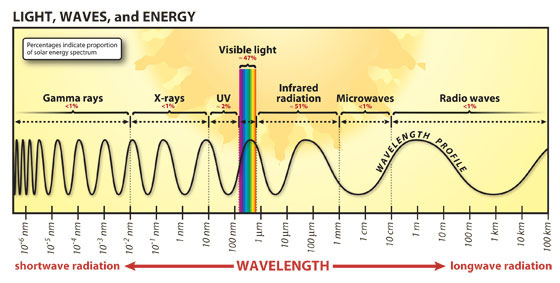Caught by the Atmosphere!
Ozone in the stratosphere absorbs most of the sun’s ultraviolet radiation, reducing its ability to damage DNA by 97 to 99 percent. Even the small amount of UV light that penetrates the ozone layer has enough energy to damage cells in plants and animals. Although cells have a natural ability to repair some UV damage, there’s a point where they lose the battle. Thinning of the atmosphere’s protective ozone layer means that more UV sneaks through, increasing the danger to living organisms.
What you see isn’t what you get.
Sunlight, like all light, consists of energy that moves in the form of waves in different sizes, or wavelengths. The light you can see is the visible spectrum. Invisible ultraviolet waves have shorter wavelengths and more energy than visible light.
About 95 percent of the UV light that passes through the ozone layer gives you a suntan. It’s called UVA. The other five percent, known as UVB, gives you a sunburn. Exposure to UVB in sunlight can alter the DNA in your body’s skin cells and increase the risk that they will become cancerous years later. UVA causes skin to age and wrinkle and may affect the development of skin cancer, too. UV light can also cause cataracts to form over the lenses of the eye.


